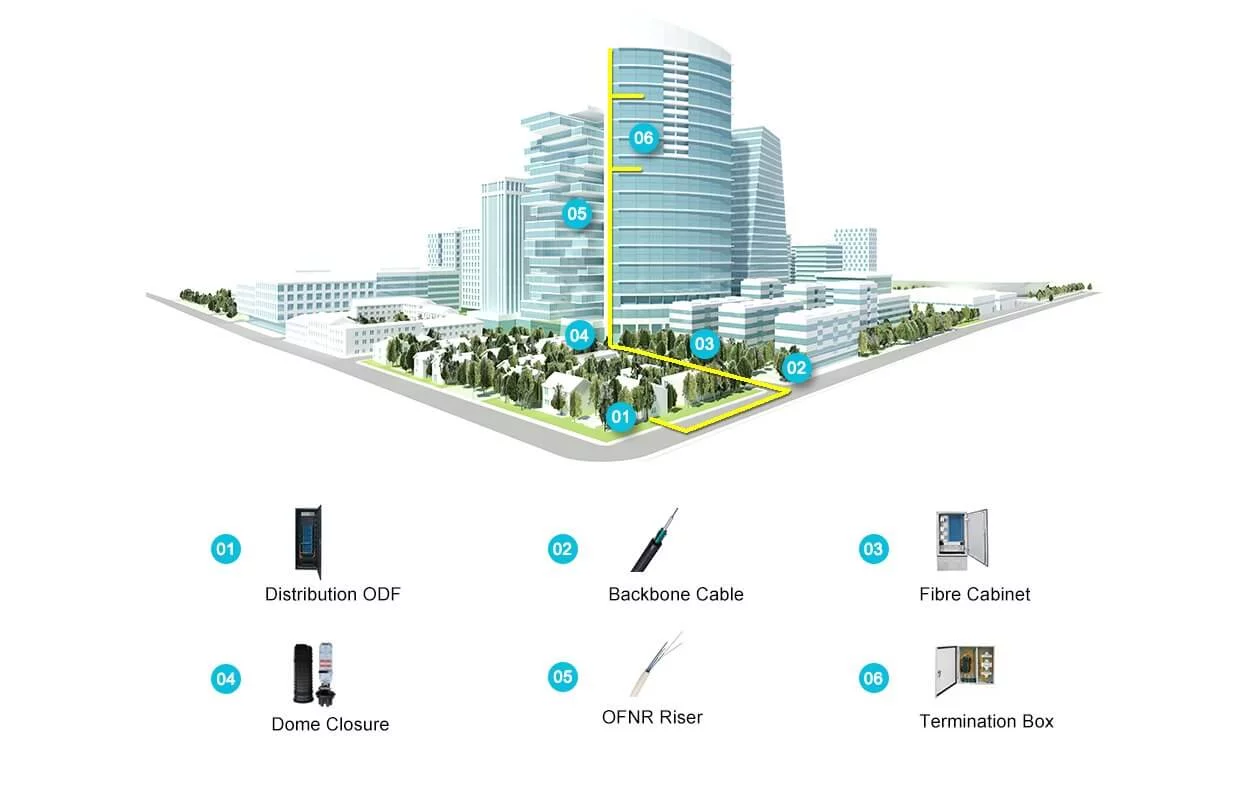Designing an excellent FTTH (Fiber to the Home) network requires careful planning, attention to detail, and consideration of various factors.
Here are the steps to complete an excellent FTTH network design:
- Define Objectives and Requirements:
- Identify the specific goals and requirements of your FTTH network, such as the number of subscribers, bandwidth needs, and coverage area.
- Site Survey:
- Conduct a thorough survey of the installation area to understand factors like existing infrastructure, topography, and potential obstacles.
- Network Topology:
- Choose the appropriate network topology, such as point-to-point or passive optical network (PON). PON is common for FTTH due to its cost-effectiveness.
- Fiber Planning:
- Calculate the required fiber lengths, type, and capacity. Consider factors like fiber count, splicing, and the distance to the central office or data center.
- Distribution Hubs and Splitters:
- Determine the location of distribution hubs and splitters, ensuring efficient fiber distribution to subscribers.
- Subscriber Drop Design:
- Plan the design of fiber drops from distribution points to individual subscriber premises, including cable routing and installation methods.
- Equipment Selection:
- Choose reliable and scalable optical line terminal (OLT) and optical network units (ONUs) for your network. Ensure they meet your capacity and performance requirements.
- Redundancy and Reliability:
- Implement redundancy and failover mechanisms to ensure network reliability. This may include backup power supplies and redundant fibers.
- Bandwidth Management:
- Plan for bandwidth management and QoS (Quality of Service) to prioritize traffic based on service requirements.
- Regulatory Compliance:
- Ensure your design complies with local regulations, permits, and safety standards.
- Documentation:
- Create detailed network design documentation, including fiber route maps, splicing diagrams, and equipment layouts.
- Testing and Validation:
- Perform testing and validation of the network, including OTDR (Optical Time-Domain Reflectometer) testing, to verify the quality of the fiber connections.
- Capacity Planning:
- Plan for future growth by assessing potential expansion needs and considering technologies like wavelength division multiplexing (WDM).
- Security:
- Implement security measures to protect the network against physical and cyber threats.
- Aesthetics and Environmental Considerations:
- Consider aesthetics and environmental impact when deploying fiber cables, especially in residential areas.
- Training and Documentation:
- Provide training to your network technicians and document procedures for installation, maintenance, and troubleshooting.
- Ongoing Maintenance:
- Develop a maintenance plan for regular network upkeep, including cleaning connectors and monitoring network performance.
- Cost Estimation:
- Prepare a detailed cost estimate for the entire project, including equipment, labor, permits, and ongoing operational expenses.
- Project Management:
- Establish a project management framework to monitor and control the network design and deployment process.
- Customer Support and Service Level Agreements (SLAs):
- Define customer support processes and SLAs to ensure high-quality service to subscribers.
Completing an excellent FTTH network design requires a multidisciplinary approach, involving network engineers, project managers, and technical experts. Regularly review and update the design as technology and requirements evolve.
PNA Fiber provide one-stope FTTH solution since 2008 years, more than 20K+ projects , more than 98.2% good rating , contact us now !


